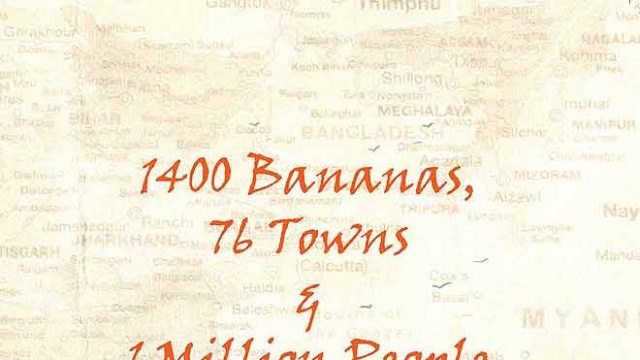A good travelogue provides its reader with places, faces, flavours and stenches, and going by those critical criteria I found myself thoroughly enjoying this book about ‘1400 bananas’—and so much more.
The author, from Nagpur in Maharashtra, begins by chucking up his job to undertake a journey down the coastline from Gujarat, south to Kanyakumari and then back north along the east coast to West Bengal, until he ends up at the Indo-Tibetan border quite a trip later. We get snippets of life in small fishing ports, interspersed with visits to the occasional tourist destination. His is a journey very similar to the one described in Samanth Subramanian’s modern travel classic Following Fish, except that the direction is reversed and we get more diary, less reportage.
But being a skilful observer of people and habits, Nazareth manages to bring an entirely new dimension to what could otherwise have been an average travel diary. Although he stutters terribly, he chats up people, engaging with rickshaw drivers, touts, other sundry travellers, shopkeepers and sweetmeat vendors. In Kerala a priest even tries to cure his stammering with a blessing. Most of all, he speaks to fishermen and even gets to go along on an early morning fishing trip in Odisha.
So if you ever wanted to know what it is like to visit, say, Alang or Malvan, Cuddalore or Balasore, or any other small coastal town you may vaguely have heard of, this book is written for you. I, for one, had never thought it necessary to go to Kakinada (in Andhra Pradesh) but after reading Nazareth’s description of the local ‘chicken biryani’, a pulao mixed with a chicken skin gravy which is served on a tray covered in ‘samples’—i.e. sides of fish, crab, prawns —I get a strong feeling that there are important discoveries to be made by travelling through small town India.
Adopting a method of trial and error, Nazareth works his way through budget hotels—occasionally ending up in real dumps in strange places like Yanam. He checks out tourist attractions of various degrees of interest, once even trying to walk into a top secret nuclear installation for a look about, but being immediately thrown out at the gates. His best moments are, however, in canteens where he observes local eating habits, describing for example how the fiery fish curry in Mangalore tops the volcano of rice on the plate. He eats practically everything that is put before him, experiencing a range of cuisines from excellent to mediocre (but generally spicy and satisfying). He also adds his two bits of foodie wisdom now and then, such as: “The travelling gourmand, for all his penchant for culinary adventure, is somewhat cautious and counts the number of flies in an eatery before ordering. He is experienced enough to know it is pointless to worry over the water since he cannot control the water the utensils are washed with. However, one can certainly draw the line at mixing undesirable organisms into one’s food.”
So don’t let yourself be put off by the title of the book— Nazareth enjoys much more than the mere 1,400 bananas stated, though he does hog a lot of the fruit, for sure




